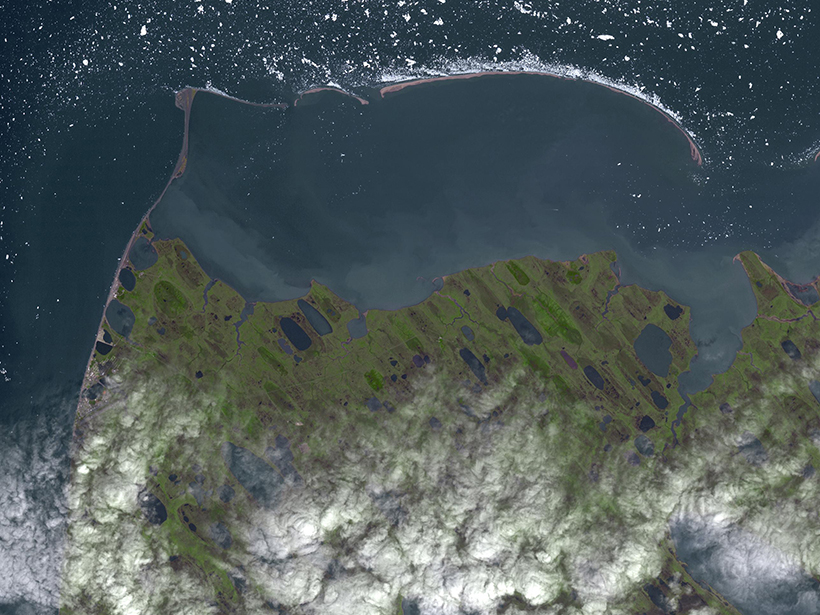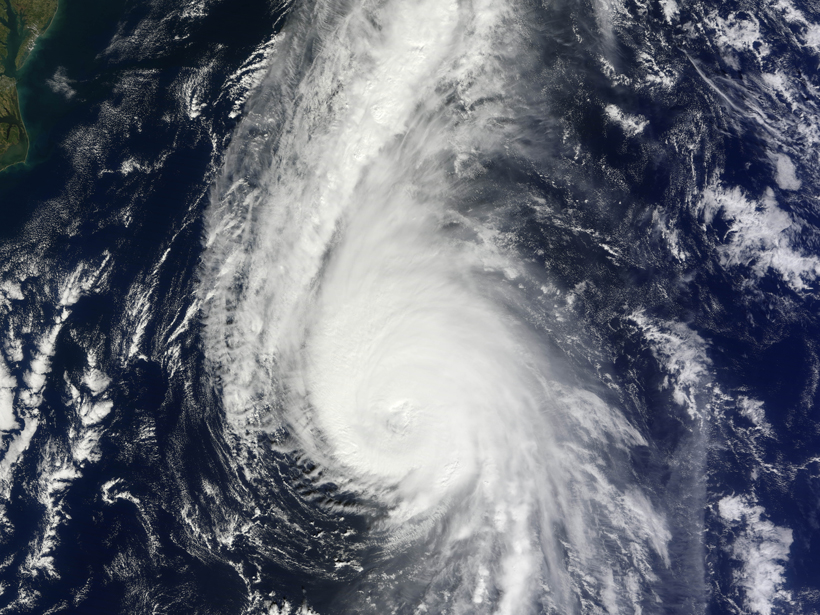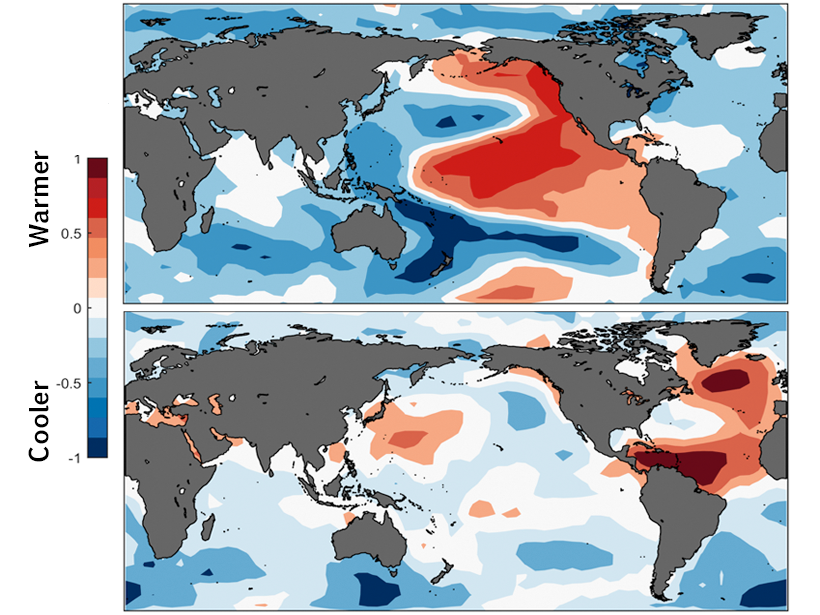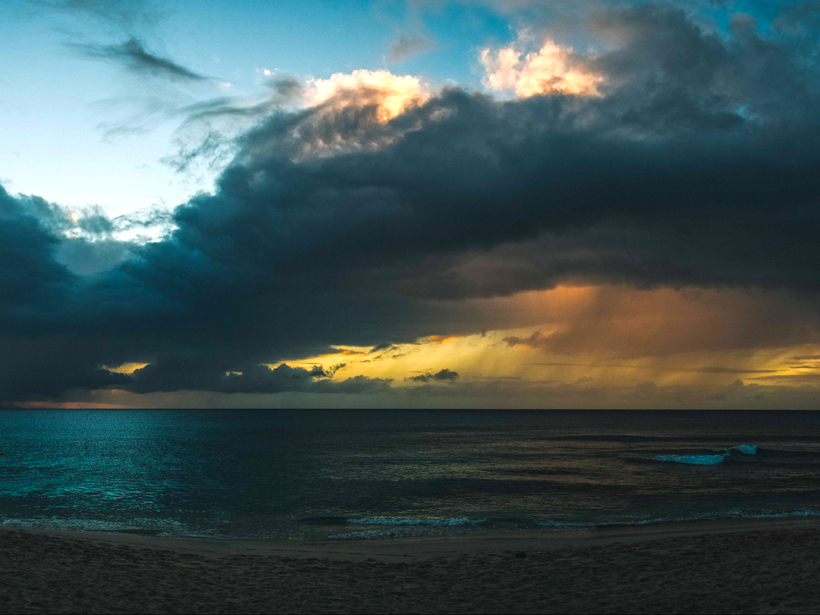Dissolved organic matter in the oceans absorbs light near the water’s surface, leading to cooler waters that may help mitigate regional climate warming.
Northern Hemisphere
Autumn Warming No Longer Accelerating Carbon Loss in the North
An analysis of Point Barrow’s 40-year record points to the importance of calculating the carbon cycle’s response to temperature during the northern latitudes’ non-growing season.
Eyes in the Sky Look Closer at Under-Surveyed Northern Forests
Spaceborne images give scientists a detailed picture of the boreal forests’ tree heights, which help scientists estimate their contribution to carbon budgets.
When Ocean and Atmosphere Couple, the Climate Wobbles
Every 25–30 years, the ocean and atmosphere conspire to produce an enhanced North Atlantic Oscillation
Was the Recent Slowdown in Surface Warming Predictable?
The temporary deceleration in warming across the Northern Hemisphere earlier this century could not have been foreseen by statistical forecasting methods, a new study concludes.
Modeling the Future of Dissolved Organic Carbon in Boreal Forests
Climate change and forest harvesting will increase the concentration and flow of dissolved organic carbon in boreal streams.
Aerosol Cutbacks May Bring Tropical Rains Farther North
Lower anthropogenic aerosol emissions in the 21st century may lead to warming that drives the Intertropical Convergence Zone northward.
Large Volcanic Eruptions Cause Drought in Eastern China
In a study with implications for geoengineering, large Northern Hemispheric volcanic eruptions are found to cause strong droughts in much of eastern China.








